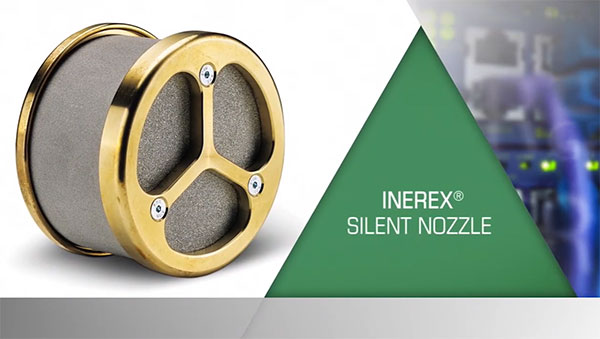Why Inert Gas Fire Protection is Safe for People

However, it is possible that some people will not have been able to evacuate the room and may be exposed to small amounts of a suppression agent. That is why a system designer needs to understand the effects of specific agents on people. In this blog, you'll learn what happens to people when a fire occurs in an enclosed space that is protected by an inert gas fire suppression system.
What Happens When a Fire Starts?
People are alerted to the fire through visual recognition, smelling smoke and/or an audible alarm. At the same time, the fire system detects the fire and electronically actuates the release of inert gas. As people start to exit the area, the inert gas travels through discharge hoses to a manifold, then through piping to nozzles where it floods the room — suppressing the fire within 60 or 90 seconds from the initial fire detection.
What are Inert Gases?
Inert gases, then are a natural part of the atmosphere we breathe. The normal air in our environment is about 20.9% oxygen, while the remaining air is made up of inert gases: nitrogen (78%) and traces of argon, carbon dioxide, neon and helium. An inert gas fire suppression agent could be 100% nitrogen, 100% argon or a combination of the two gases.
What Happens When People Breathe an Inert Gas Suppression Agent?
While people in the process of evacuating a room are threatened by toxins released from combustion, they are not at risk from the inert gas suppression agent. First, inert gas mixtures are non-reactive. When the agent interacts with the fire itself, there is no formation of potentially toxic by-products. Inert gases are not a mutagen (changing DNA), teratogen (affecting embryos) or carcinogen (causing cancer), and they also have no effect on the central nervous system.
Second, there is evidence that the early release of inert gas actually enhances the prospects of human survival, without residual effects, when they are exposed to toxins released by combustion (smoke, CO, N2O). They are actually safer with, rather than without, the presence of inert gases in the design concentration used to extinguish a fire.
Consequently, there is no toxicological basis for delaying operational flooding and inert gas systems can be activated immediately even in the presence of people.
With an Inert Gas Discharge, Do People Experience Negative Health Effects from Oxygen Deficiency?
Inert gas fire suppression works by displacing oxygen, since a fire cannot burn when the oxygen level drops below 15%. System installers measure the area of the protected zone to calculate the correct volume of inert gas needed to displace oxygen to a level of about 12.5%. At this point, combustion cannot be sustained, eliminating the fire quickly and effectively. After the system discharges, a fire is normally extinguished within 60 seconds.
In nature, the standard oxygen level is 20.9%. To sustain normal functions, the optimal breathing range is between 19.5% and 23.5%. As oxygen is displaced during an inert gas system discharge, when the level reaches 15% people can experience sensations resembling that of mild exercise — including shortness of breath. At a 12.5% level, they can feel their respiration and pulse rate increase and some people could feel an impairment of coordination. In certain cases, a headache may occur, which is neither serious or long lasting. Any headache is due to brain vessel dilation, a desirable physiologic mechanism in adapting to hypoxia.
In conclusion, sensations experienced when oxygen levels are lowered to 12.5% do not impair an individuals' ability to safely evacuate a fire zone. It's like breathing while you're walking through high mountain meadows. And, while a person may feel slight breathlessness and temporary discomfort, there is no residual problem for people with normal health caused by exposure to an atmosphere of 12.5% oxygen.
Inert Gas Fire Suppression System Provides the Highest Level of Safety for People
Completely natural and proven to suppress a fire quickly, inert gas fire suppression systems provide the highest level of safety for people. Rotarex Firetec has just introduced INEREX®, a set of inert gas fire system components that — when assembled according to tested limits, UL 2127 standards and specifications outlined in NFPA 2001 — form a complete UL listed inert gas fire extinguishing system. If you would like more information about this advanced, human-safe system, please contact a Rotarex Firetec expert.







